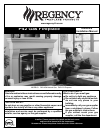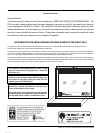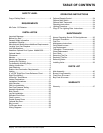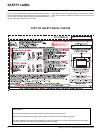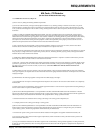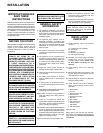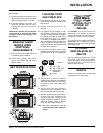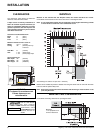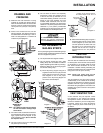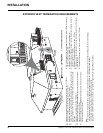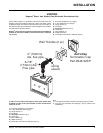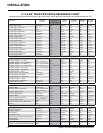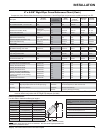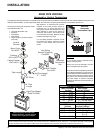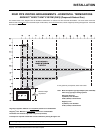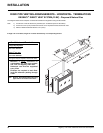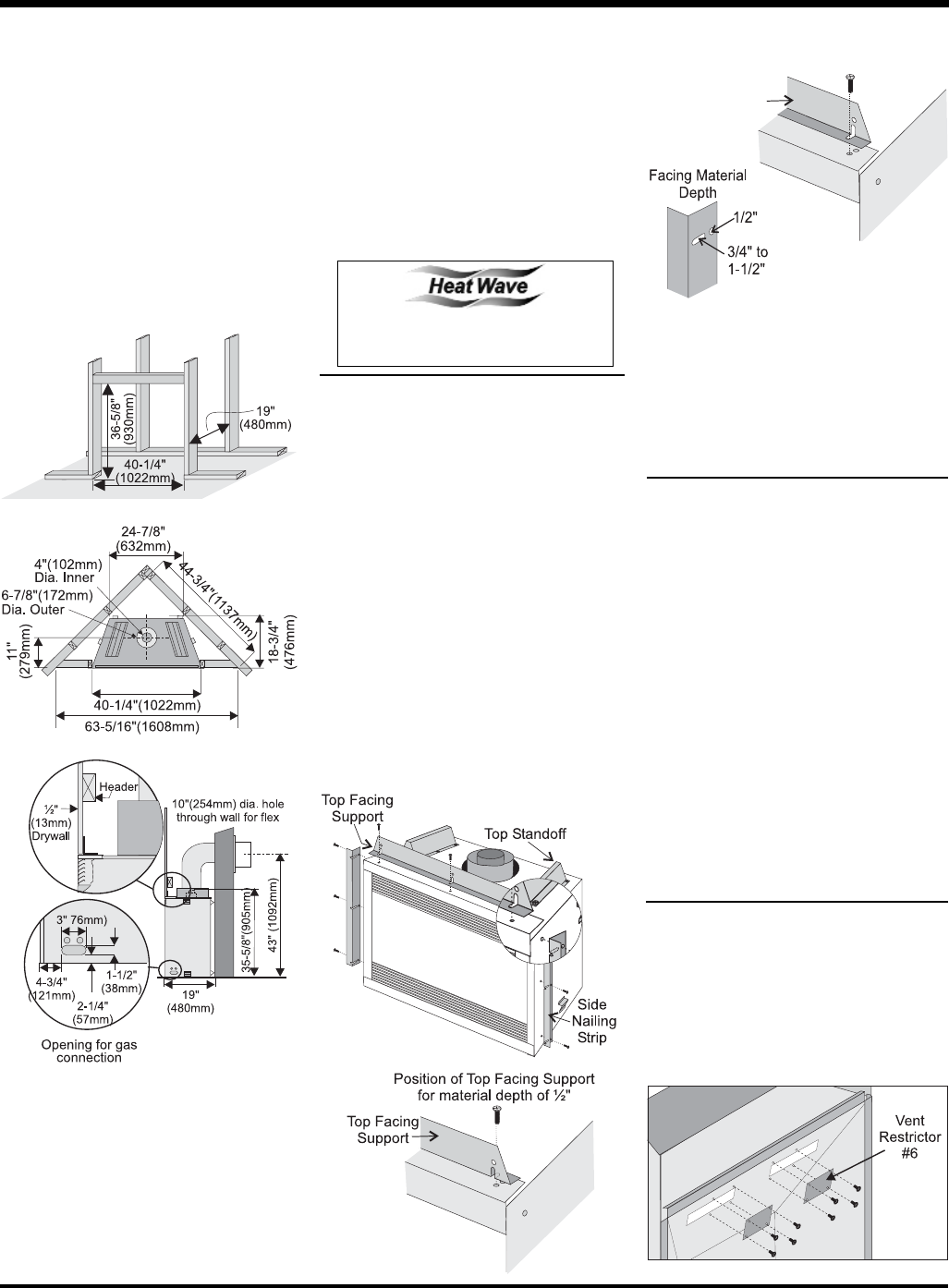
Regency
®
P42-4 Zero Clearance Direct Vent Gas Fireplace 9
Position of Top Facing Support
for material depth of 3/4” to 1-1/2"
T
op Facing
Support
TOP ASSEMBLY &
NAILING STRIPS
The Top Facing Support and Side Nailing Strips
must be correctly positioned and attached before
the unit is slipped into position.
1) The top standoffs are shipped installed.
2) The Top Facing Support and the 2 Side
Nailing Strips can be installed at different
depths depending on the width of your facing.
Match the depths of the top facing support
and the side nailing strips.
a) Mount Top Facing Support using the 3
supplied screws into the 3 pre-punched
screw holes on the top front of the unit.
See Diagrams 2 & 3 for the proper
position of the Top Facing Support for
the various material depths.
Diagram 1
Diagram 2
Diagram 3
Diagram 4
INSTALLATION
5) The unit does not have to be completely
enclosed in a chase. The clearance on top
of the unit from the top standoffs is 0" so
combustible building materials can be laid
directly on top of the standoffs. You must
maintain these clearances from the vent
to combustible materials: Flex Termination
clearance 1-1/2" (38mm), Simpson Dura-Vent
clearance or (1-1/4" (32mm). Combustible
materials can be laid against the side and
back standoffs and the fi replace base.
b) Mount the Side Nailing Strip using the 3
supplied screws into the 3 screw holes
or slots (diagram 4) on the side of the
unit and repeat for the other side. Use
the hole for a 1/2" (13mm) thick facing
material and the slot for a range of
thickness from 3/4" to 1-1/2" (25mm to
38mm).
VENTING
INTRODUCTION
The P42 uses the "balanced fl ue" technology
Co-Axial system. The inner liner vents products
of combustion to the outside while the outer
liner draws outside combustion air into the
combustion chamber thereby eliminating the
need to use heated room air for combustion and
losing warm room air up the chimney.
Note: These flue pipes must not be
connected to any other appliance.
The gas appliance and vent system must be
vented directly to the outside of the building,
and never be attached to a chimney serving a
separate solid fuel or gas burning appliance.
Each direct vent gas appliance must use it's own
separate vent system. Common vent systems
are prohibited.
VENT RESTRICTOR
A vent restrictor may be required. Check
the diagrams in the "Rigid Pipe Venting
Arrangements" section to determine if the #6
restrictor is needed for your vent confi guration.
If required, attach the 2 piece #6 restrictor
using 4 screws per piece to the inside top of
the fi rebox.
Note: 43" (1092mm) is the minimum height
for fl ex termination and Rigid Pipe
terminations.
Diagram 1
FRAMING AND
FINISHING
1) Determine the total thickness of facing
material (ie. drywall plus ceramic tiles) to
allow the fi nished surface to be fl ush with
the front of the unit. Total facing thickness
can vary from 1/2" (13mm) to 1-1/4" (32mm)
thick.
2) Frame in the enclosure for the unit with
framing material. The framed opening for
the assembled kit is 36-5/8" high x 40-1/4"
wide x 19" deep (930mm H x 1022mm W
x 483mm D). See Diagram 1.
3) For exterior walls, insulate the enclosure to
the same degree as the rest of the house,
apply vapour barrier and drywall, as per
local installation codes. (Do not insulate
the fi replace itself.)
4) The top louvers must not be closer than
36" (914mm) to the ceiling.
The HeatWave Duct Kit has different
clearance and framing requirements,
check the HeatWave manual for details.



